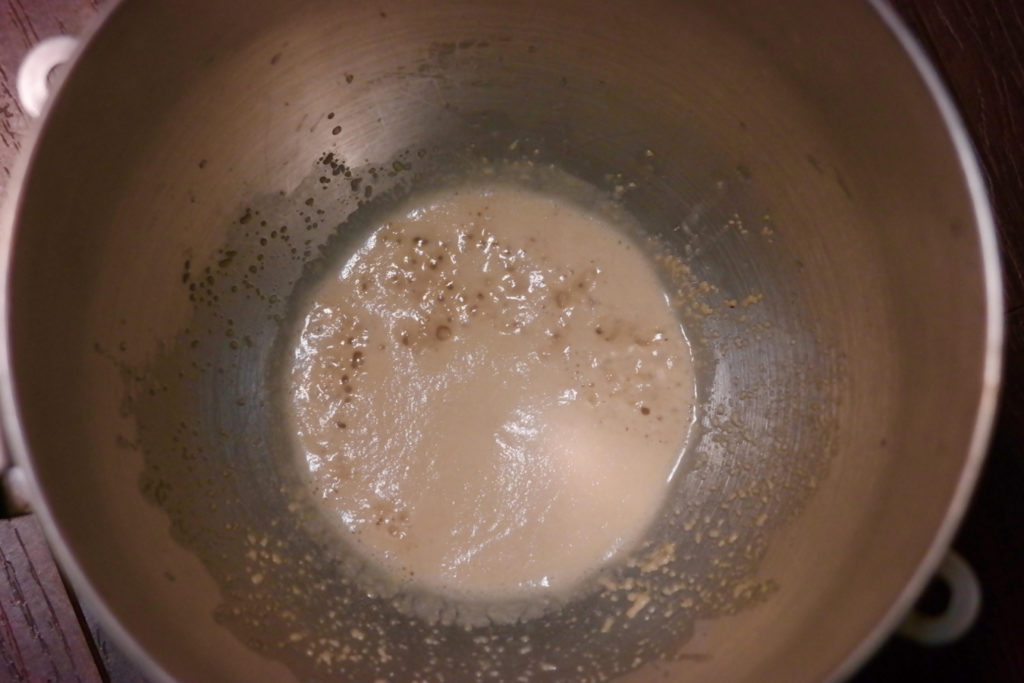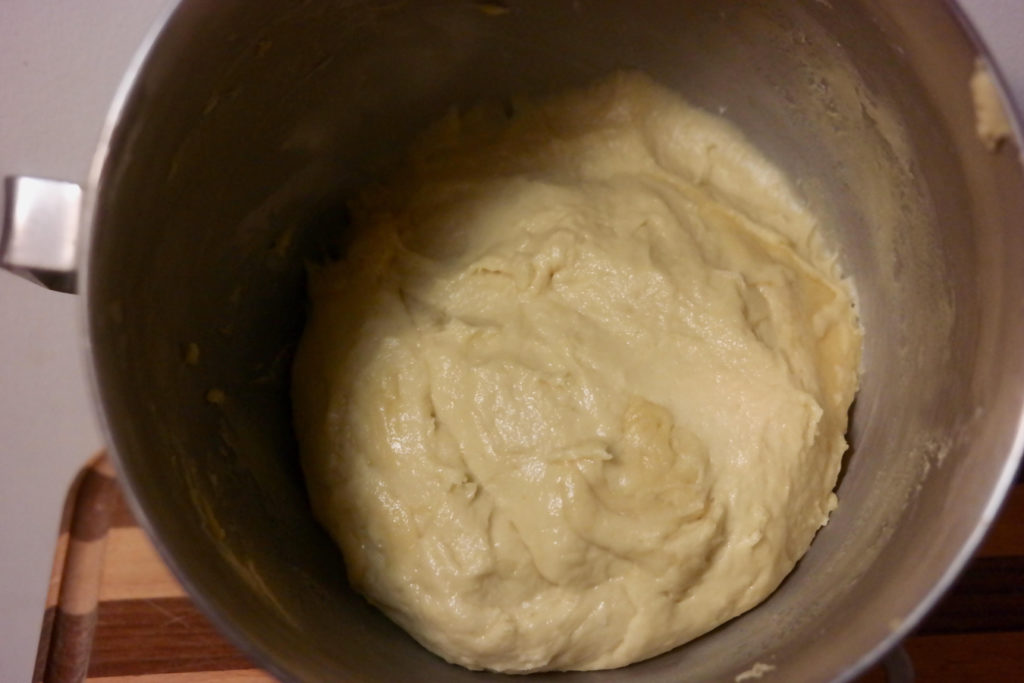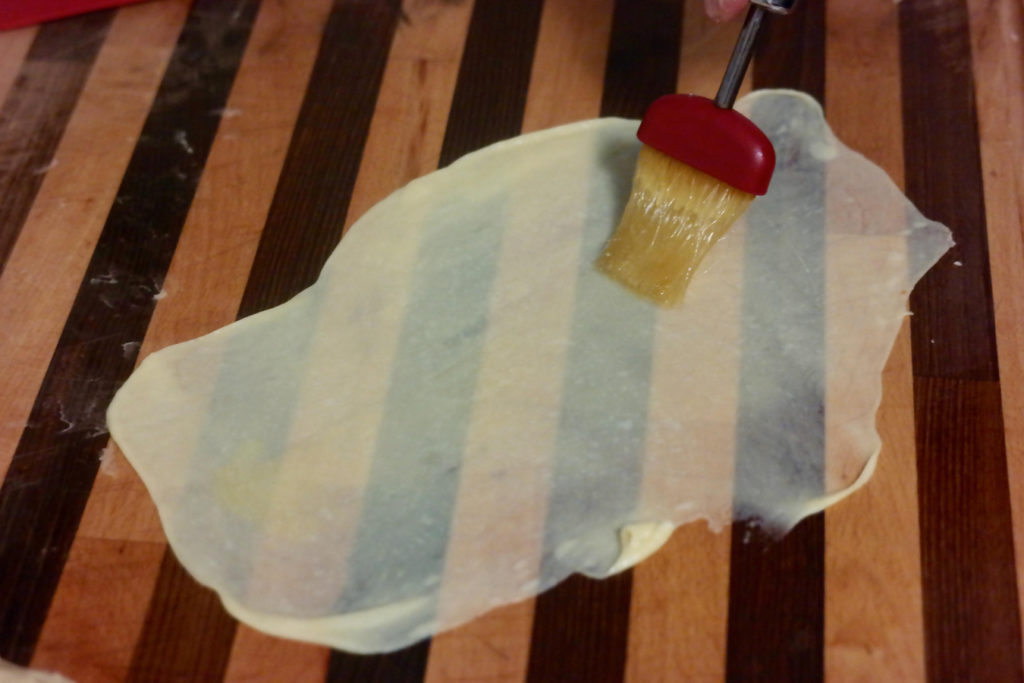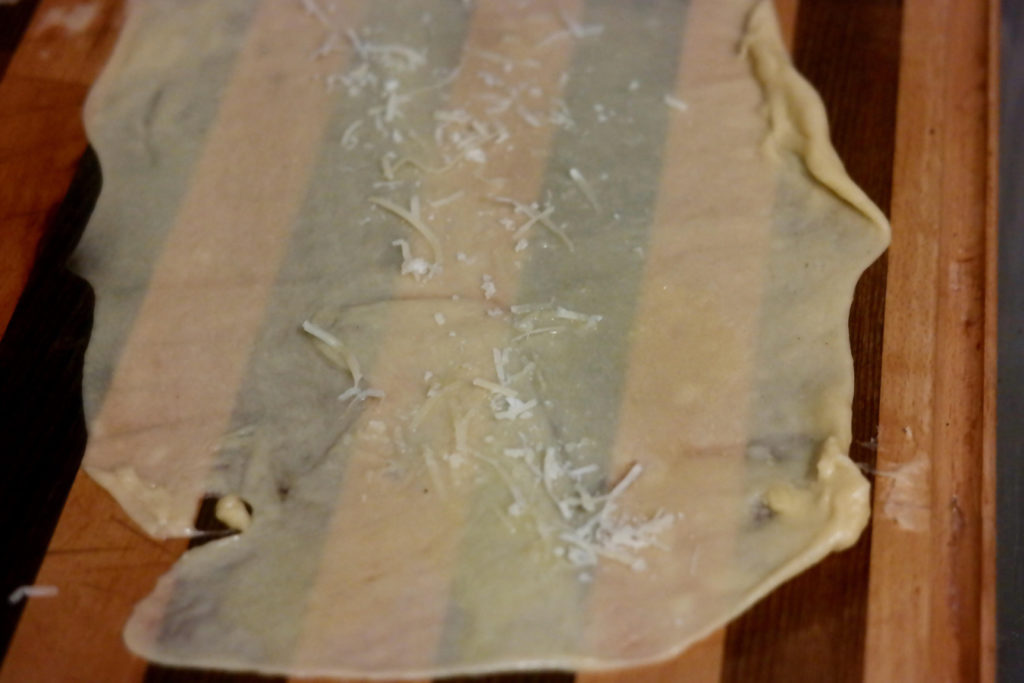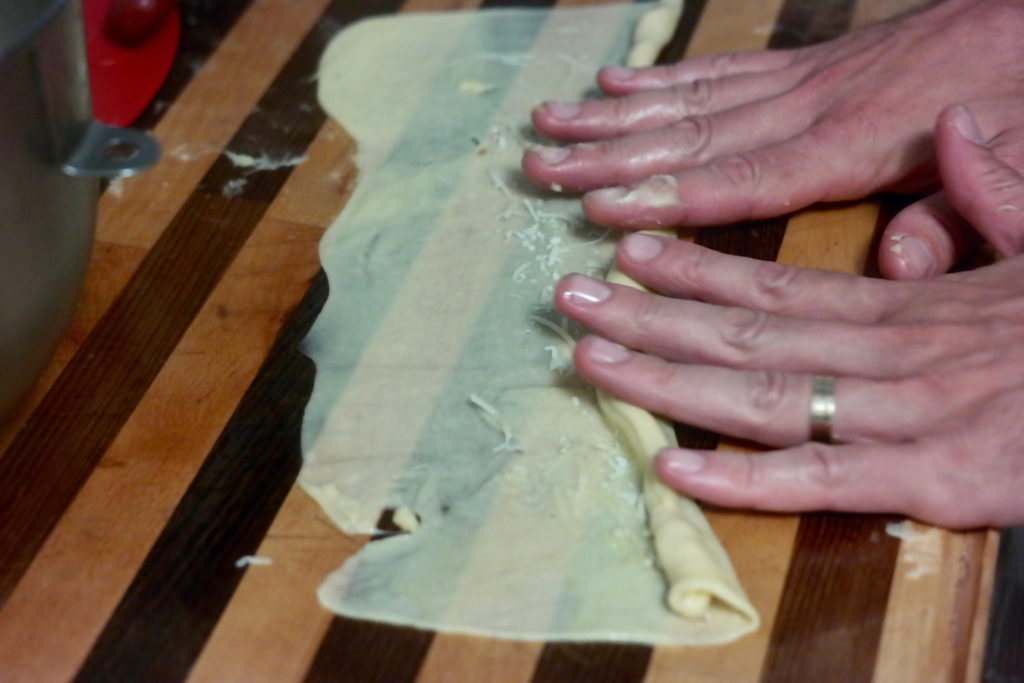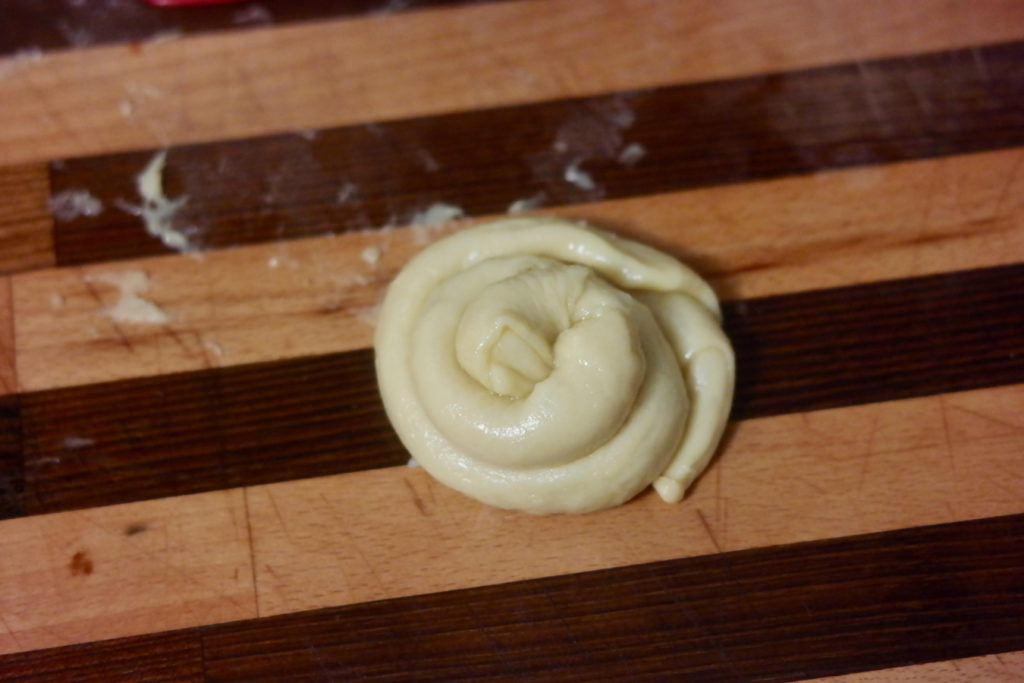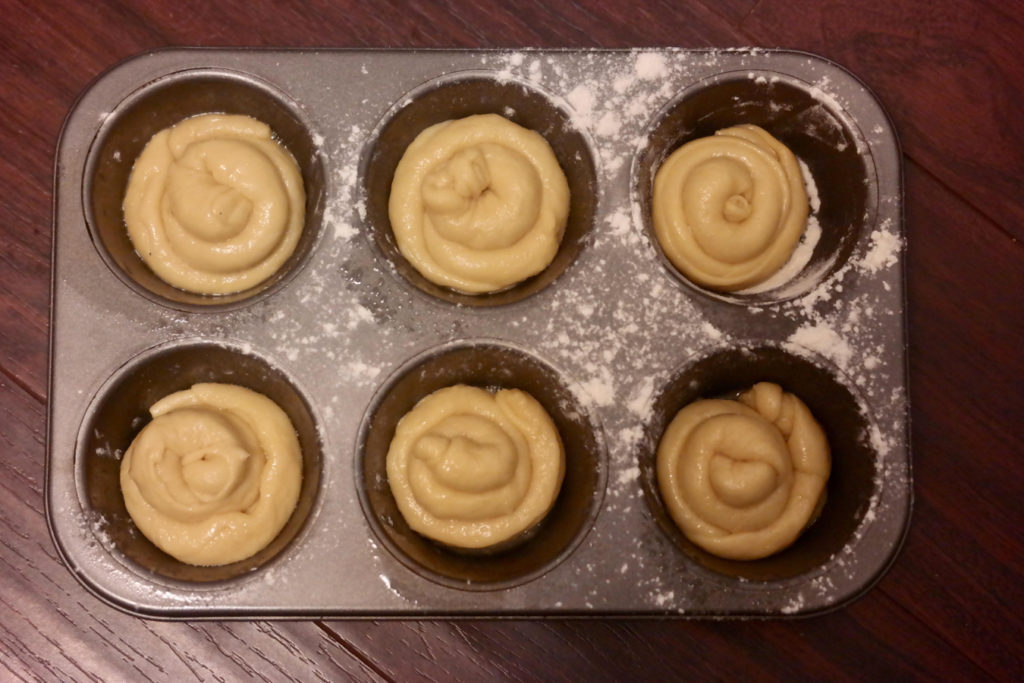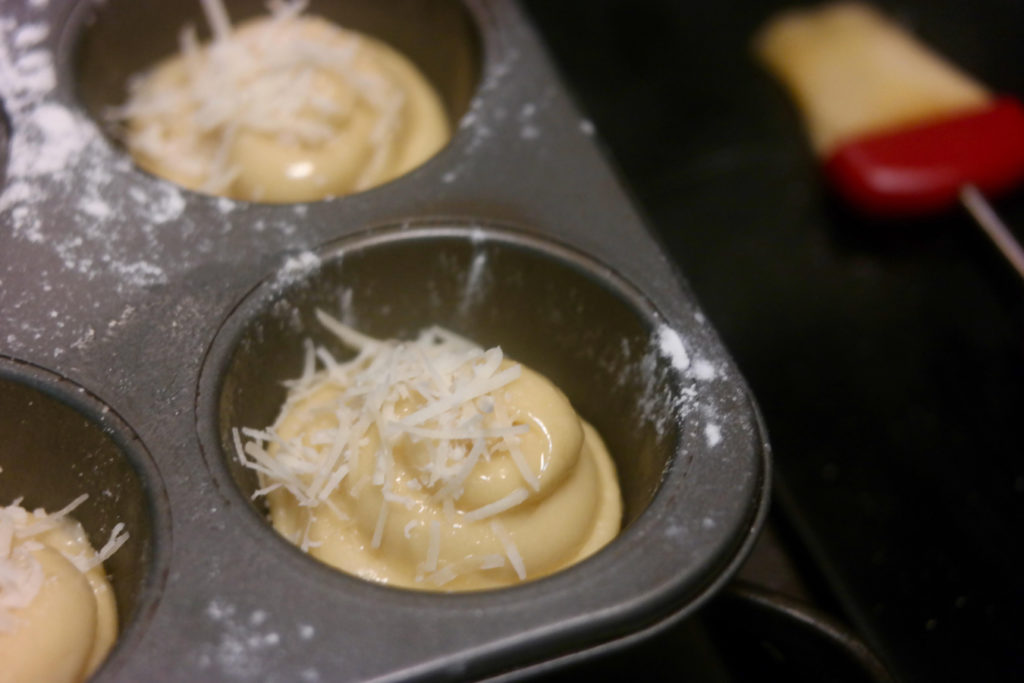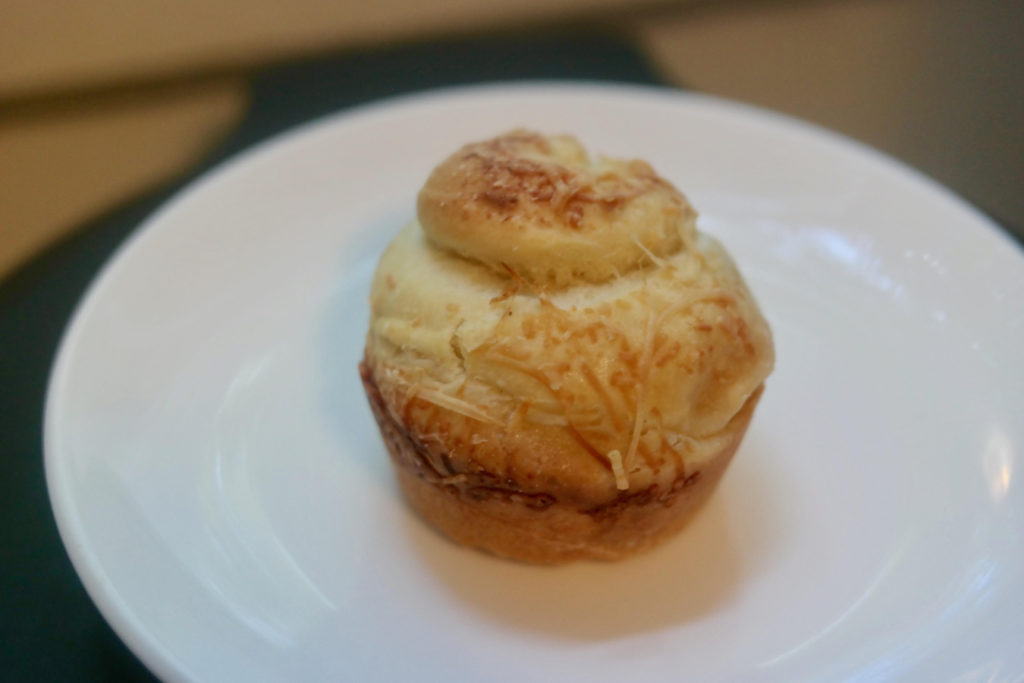Everyone likes bread (well, except for the gluten-free and zero-carb and keto folks who roam among us) and that love of baked goods is universal, because nearly every culture on Earth has its own variation on this staple food. We here at Actually Tasty like all kinds of breads, from sourdough to baguettes to crusty Italian loaves to naan and injera, but we know that there’s tons of other varieties out there that we haven’t got our hands on yet. So that’s why we were happy to see this recipe in Bon Appétit for ensaimadas, a type of roll that originated in Spain but is now very popular in the Philippines. Filipino cooks made ensaimadas their own with a different set of ingredients than was originally used, which is lucky for us because the Spanish version uses pork products. We adapted the above recipe for ourselves, making these delicious buttery breads to suit our tastes and preferences. We’ll show you how to make them here, but we want to let you know ahead of time that you’ll need to set aside at least 12 hours for these (don’t worry, you can sleep at some point during this process – read ahead to see the timing). Be warned, but also be prepared for deliciousness.
For these ensaimadas, you’ll need:
- A 1.25-ounce envelope of yeast
- Sugar
- Milk
- 6 eggs
- Flour
- 1 1/2 sticks of butter
- Parmesan cheese
Start by placing all of your yeast, 1/2 teaspoon of sugar, and 3 tablespoons of warm (but not hot) water into the bowl of a stand mixer and letting that sit, covered, for 10 minutes until it becomes bubbly.
Then add in 3/4 cup of flour, 1/4 cup of sugar, and 3 egg yolks. Heat 1/2 cup of milk on your stove over low heat until it reaches about 105°F (use a candy thermometer to measure this) and pour that in as well. Whisk everything together, cover the bowl again, and let it sit for an hour.
Next, add in 3 more egg yolks, 1 1/2 teaspoons of salt, another 1/4 cup of sugar, and 2 1/4 cups more flour and place the bowl on your stand mixer. Using a dough hook, combine everything together on a low-ish speed for 6 to 8 minutes, until the mixture is smooth. Take one stick of butter out of the fridge and let it warm to room temperature while the dough is coming together, then cut it into 8 equal pieces and throw in one piece in at a time while the mixer is running, letting each pat of butter fully incorporate into the dough before you add the next one. When you’ve got your finished dough, cover the bowl and let it rise for another hour.
Now take 2 large-sized muffin pans and coat them with cooking spray and a sprinkling of flour in each cup (you should have enough room to make a dozen rolls). Take your dough and knead it just a few times, then divide it into 12 pieces. Roll each piece out very thinly into a rough rectangle that’s at least a foot long and several inches wide, and don’t worry if the dough tears in spots. Melt 2 tablespoons of butter and brush some on top of each piece of rolled-out dough.
Grate about 1/2 cup of Parmesan and sprinkle a little bit of cheese down the middle of each dough piece.
Then start rolling up the dough pieces along their longer edges …
… and when they’re fully rolled up into a tube, wrap that tube into a spiral.
Place one roll into each cup in your muffin tins. When you’ve shaped all your rolls, cover the tins in plastic wrap and let them sit for at least 8 hours, or overnight.
When you’re ready to finish them, brush the tops with more melted butter and a small handful of Parmesan cheese.
Then bake at 325°F for 20-25 minutes, until they’re lightly browned and puffed up.
OK, we’re not going to lie – these take some work, and you have to plan the timing carefully. There’s a lot of setting things aside to let them rise, plus you’ve got to patiently roll and shape the dough. If you’re not careful you could end up at 1am frantically trying to put these ensaimadas together. That’s why we’ve tried to outline how long these take, and we found that if you take care to map everything out you’ll be able to work these rolls in around your day. And once you bake them up, they’re worth the effort: they’re rich and buttery and sweet with cheese rolled inside and melted on top. They make for an excellent breakfast or a good accompaniment to a meal. So while you might not want to expend the time and effort to make these regularly, they’re a great treat, a unique type of bread, and a rare vegetarian taste of Filipino cuisine.
